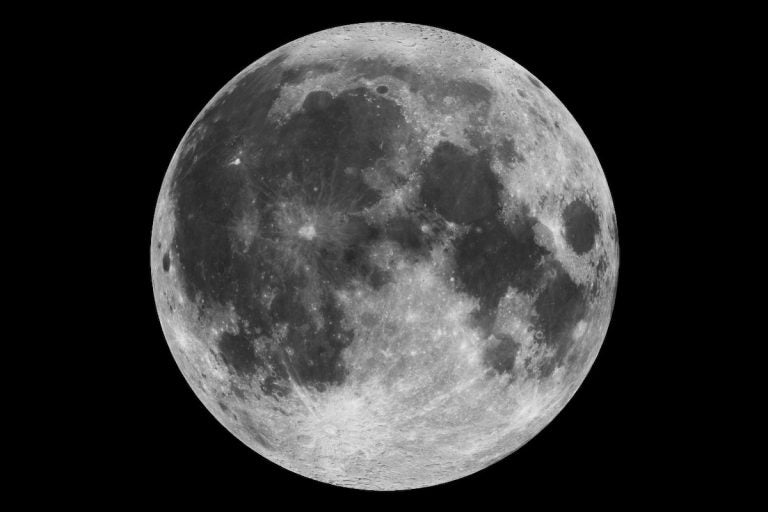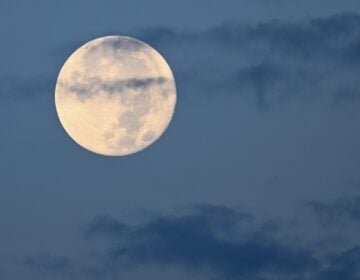Two-Faced
Listen 06:34
This composite image of the moon using Clementine data from 1994 is the view we are most likely to see when the moon is full. Credit: NASA
The moon has two distinct faces; gravity readings of the moon’s surface by a lunar orbiting satellite suggest that not long after formation of the original surface, another dwarf-planet-like object smacked into it causing the impacted side to be thrown upward and back to fold itself onto the back side of the moon.
The best fit of some 360 simulations run by Meng Hua Zhu at the Space Science Institute of Macau University of Science and technology suggest an object about 480 miles in diameter and traveling at 22,500 mph, hit with enough force to re-surface the back side of the moon with up to six miles of layers from the front side.
While the back or far side is commonly referred to as the “dark side,” the moon receives equal amount of sunlight on each side, during the lunar day.
Only one side of the Moon is visible from Earth because the Moon rotates on its axis at the same rate that the Moon orbits the Earth – a situation known as synchronous rotation, or tidal locking.
Information from the European Space Agency Gaia satellite (providing precise distance and motion measurements for more than one billion stars) allows us to determine that at one time, our galaxy was making dozens of stars per year and that rate of production lasted for 5 billion years. Star production ebbed and flowed over the ensuing billions years bringing us to where we are now in production: just one solar-mass worth of stars per year. Yes, production will eventually end but not for billions of years.
This is the final week to see Mars in the evening – it will be gone into the glare of sunset next week.
Jupiter and Saturn are now pushing into the evening sky – Jupiter rising by 10:00 pm and Saturn by midnight.
They’re both visible in the pre-dawn sky straddling the southern Milky Way, bright Jupiter ahead of dimmer Saturn.
WHYY is your source for fact-based, in-depth journalism and information. As a nonprofit organization, we rely on financial support from readers like you. Please give today.




